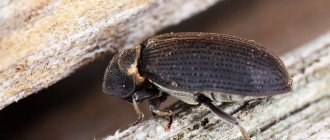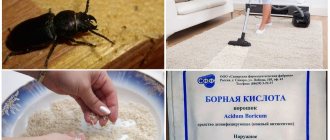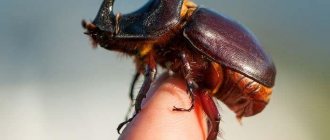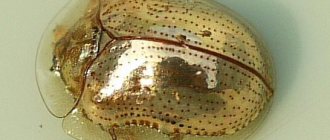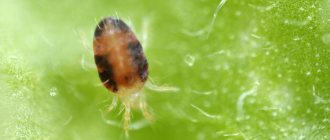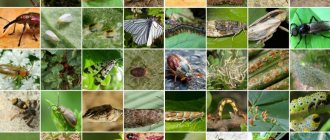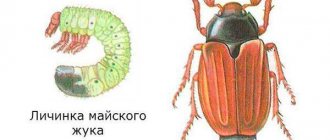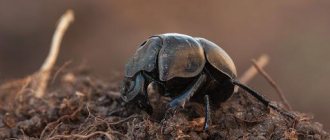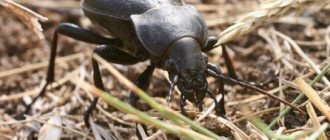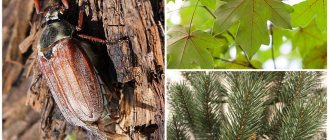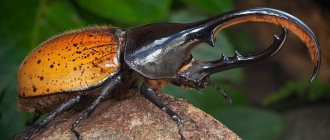Description of species
Bronze beetles are beetles from the lamellar family. Many species in this group are brightly colored and also have a metallic sheen. This insect is often confused with the common cockchafer. Known types of bronzes: golden, copper, green.
Golden bronze
This is a fairly large beetle. Its oblong, oval body can reach 22.5 mm in length. The upper part of the body is most often covered with hairs, but completely naked individuals are also found. When examining the bronze from above, the golden-green color is clearly visualized. Entomologists also note the presence of a copper-red tint with a metallic sheen.
The beetle's diet includes flowers of wild or cultivated plants. But at the same time, golden bronze usually does not cause serious harm to gardening.
Copper bronze
This is a beetle whose body length reaches 16-25 mm. The body is narrow, slightly convex and slightly narrowed backward. The head is covered with numerous large dots. The upper side of the body is smooth, shiny with an emerald, bluish, olive or reddish-greenish tint. The head is relatively light with a copper-violet tint.
Green bronze
Insects are divided into large and small. The large green bronze beetle is listed in the Red Book of the Russian Federation. The body of the green lesser bronze reaches a length of 18-20 mm. The pest has wings, green limbs, and elytra that resemble a shield. Insects are especially active when the sun shines brightly, and at night the ground becomes their home.
Features of the anatomy and vital functions of bronzes
The bronze beetle belongs to the family of lamellar beetles. The subfamily includes 5 subspecies, individuals of which differ in appearance and habitat. The green beetle is similar to the May beetle, with which it is sometimes confused.
Distinctive features of the insect:
- green color with a metallic tint, which makes bronzes very noticeable and beautiful;
- medium-sized head, extended forward and slightly tilted backward, wide, oblong body;
- the nature of the flight - the hard wings of the bronze fly remain folded during the flight, while the transparent thin wings are released through the side recesses at this time.
Interesting! Despite the impressive size of the body (varies from 18 to 20 mm), these beetles feel quite free and easy in the air.
The departure period begins in May and lasts 2–4 months. There is increased activity in dry heat. On cloudy days, beetles sit motionless on branches. At night they prefer to burrow into the ground.
Females are smaller in size than males. Females lay their eggs in anthills, compost or manure heaps, and dilapidated soft wood. The larvae have large parameters; they are thick and large. Molting occurs twice. They move on their back because they do not have claws.
Food preferences
The harm this insect causes becomes clear from what the bronzeback eats.
Pest food preferences:
- flowers (especially light ones);
- young fruits;
- ovary of plants or fruits;
- first leaves.
The beetles completely eat up the stamens and pistils, so sexual reproduction of seed plants becomes impossible, and the yield sharply decreases. It is not surprising that gardeners and gardeners are looking for effective ways to deal with bronzes.
If the bronze fly gets into the house, then its food becomes indoor plants.
Other lilac pests
There are types of beetles and insects that like to feed on different parts of the trunk and leaves.
| Name of pests | Description |
| Leafcutter bees | They are good pollinators, but they can also cause harm. To build their nests, they use parts of cut leaves, which can harm a large number of green parts. |
| Sawflies | Some types of sawflies harm leaves. They make a lot of holes in them, which significantly reduces the tree’s immunity. |
| Bark beetles | Several species of these beetles settle on the trunks and roots of lilacs. But they usually attack already damaged plants. |
Harm from larvae
After fertilization, the female lays one egg at a time (rarely 2-3) in the soil or old tree stumps. The bronze larva appears after 2-3 weeks. For 2 months they feed on dead roots or other plant debris, which at that time are decomposing in the soil.
At this stage of development, the pest is not dangerous, but even useful. The larva constantly eats, crushing plant debris that is already partially destroyed by putrefactive processes. In this way, it accelerates the decomposition of solid particles, which would remain intact for a long time.
Leaf-eating insects
Insects that feed on the tissues of buds, leaves, flowers and green shoots are called leaf-eating pests. They are few in number and are represented by beetles, butterflies and bees.
blister beetles , sometimes in very large quantities , called ash spank or Spanish fly (Lytta vesicatoria) . The beetles are large, 11–21 mm long, elongated, metallic green and have a pungent, unpleasant odor. Their larvae live in the nests of solitary bees. In some years, the beetles do a lot of damage, destroying almost all the leaves, leaving only thick veins.
Spanish fly
Previously, Spanish flies and some other blisters were used in pharmacy to make blister plaster.
In spring and early summer, small patterned areas are eaten from the edges of leaves by small weevils of the genus Phyllobius.
Large oval, semicircular or round cutouts in the leaves of lilac and other species are cut by leaf -cutter bees from the genus Megachile . These bees use cut pieces of leaves to build nest cells.
Very rarely, the larvae of the wasp sawfly (Allantus vespa) , hawkmoth caterpillars (Sphinx ligustri) and moths (Phalaena Syringaria) . Larvae and caterpillars eat holes of various shapes and sizes in the leaves. All these insects do not cause much harm to lilacs.
How to deal with bronze
There are many ways to effectively combat golden bronze and other species of this family. Each gardener or florist selects his own optimal option.
Manual collection
Pests are collected in the morning, when the beetles sit motionless on the flowers. Shake the insects into a bag or onto a cloth/oilcloth spread under the plants. The collected bronzes are destroyed mechanically. This method justifies itself when there are a small number of pests in the garden. If more than 10-15 pieces have affected one plant, then urgent measures are taken before the insects spread further throughout the garden plot.
Chemical soil treatment
Pests feed during the day and go to the ground at night. In the evening, using insecticides of contact and intestinal action (Diazinon, Bazudin, Diazol), water the soil around the damaged plants. Use such an amount of the product that it penetrates 3-5 cm into the ground. Bronzeworts that come into contact with the poison die.
Popular spraying products: Aktara, Contract Plus, Confidor Extra, Senpai, Akarin. Treatment is carried out in the evening, when the sun sets, since beneficial insects are already resting at this time. Spraying is done once a week. Usually it is enough to repeat the manipulation 2 times. This allows you to get rid of bronze marks for a while. After 2-3 weeks, new pests arrive, so the treatment is repeated.
Do not use insecticides for spraying during the day, as this provokes the death of beneficial pollinating insects. If neighbors have an apiary, they are warned about the planned spraying of the plants.
Traditional methods
Some people prefer to fight bronzing with folk methods:
- Infusion of celandine. To prepare it, 100 g of dry grass is poured into 1 liter of boiling water. Keep the product in a dark place for 24 hours. After filtering, the infusion is used for spraying.
- Infusion of horse sorrel. To prepare, take 30 g of sorrel roots, previously crushed, which are poured with a liter of boiling water. Leave for 2-3 hours, filter, and then spray the affected plant once every 5 days.
- Wood ash. 15 g of ash are dissolved in 5 liters of water. Infuse the product for 1-2 days. Add 25 g of laundry soap, previously crushed on a fine grater, to the solution. Spraying procedures are carried out once every 5 days.
Since bronze beetles fly into bright light in the evenings, some use light traps to combat them. Other flower lovers have noticed that liquid smoke repels harmful insects well. Dissolve 45 ml of flavoring in 10 liters of water, as well as 50 g of dark laundry soap. This product does not wash off from plants for a long time, even during rains.
How to deal with bronzovkas is decided by the owners of their personal plots, depending on the severity of the problem. In some cases, these beetles only occasionally fly into beds or flower beds, so there is no need to mercilessly destroy them.
Where does the Spanish fly live? About wonderful lilacs, an eerie smell and Google
The whole city is covered in lilacs (I live in Almaty), everything is filled with an intoxicating aroma. And what an incredible variety of shades of color and smell! From snow-white to dark purple, almost black. Of course, terry aristocrats grow mainly under supervision - behind a fence, pleasing the eye with powerful inflorescences of a wide variety of shades. And in parks, on the streets, along roads, simple plants with pale tassels are more common. But this does not prevent them from delighting the sense of smell with the most delicate aroma. Spring without lilacs is not spring!
The popularity of lilac is due not only to its beauty and smell, but also to its unpretentiousness and vitality. This perennial plant, unlike fruit trees, is not susceptible to diseases, and the bitterish foliage is not to the taste of harmful caterpillars.
I would still be sure of this if... But everything is in order.
Going to the dacha at the beginning of May, where a huge bush of dark purple lilac grew right at the gate - my rightful pride, I was looking forward to how I would take huge armfuls home and present them to my acquaintances. Last visit, the lilacs were just beginning to bloom, now is the time. Opening the gate, she prepared to inhale the wonderful aroma.
Photo: pixabay.com
But there was no aroma as such. There was a sickening, vile stench, through which lilac notes barely broke through. And the flowers... From most of the brushes, only gnawed, rust-covered veins remained. It seemed that the lilac had faded. And the leaves... all the young leaves were gnawed at the edges, they became like birch leaves.
Upset, I stood staring at the gnawed branch when a beetle crawled out into the light of day, that is, onto the leaf. Elegant, narrow, about two centimeters long, in sparkling yellow-green clothes, he would be an aristocrat of the beetle world (this is not a stocky, nondescript dung beetle), if not for the smell. Something between the stench of a long-uncleaned rat cage and decaying carrion. With such protection, these beetles are not afraid of any enemies - any bird will disdain to touch such prey.
Spanish fly Photo: ru.wikipedia.org
The neighbors (pensioners who permanently live at their dacha) said that the beetles appeared in huge numbers a few days ago, they are eating all the ornamental shrubs and they stink so much that it is impossible to get close to the plants. And can I, with the help of the all-powerful Google, find out what kind of infection this is and how to fight it. Nothing like this had ever happened before.
Returning home, I still cut off several lilac branches that did not look too damaged. Well, at least enjoy your favorite flowers a little.
I wish I hadn't done this. I felt sick in the car, the disgusting smell drowning out the aroma of lilac made me feel nauseous. It’s okay, at home I’ll put flowers in the bathtub, wash it, and maybe this nasty thing will disappear.
Yeah! No matter how it is! During the night the bathroom stank so much that it was disgusting to go into it. The lilacs had to be thrown out, but the stench - no, no, but made itself felt all week.
Beautiful beetle, but stinky! Photo: ru.wikipedia.org
Naturally, I rummaged around on Google. And my surprise knew no bounds. Do you know the name of this nasty stinker? Spanish fly! Yes, yes, this shiny beetle is the same Spanish fly that was part of the love potion, causing dramatic collisions and ambiguous situations in gallant times.
Its Latin name is Lytta vesicatoria , and it belongs to the class of blister beetles, the toxic substances of their internal fluid - hemolymph - when it comes into contact with the skin, cause burns and inflammation; if they get into a wound, it results in a long-healing abscess, and once inside, they disrupt the activity of the genitourinary tract, and in large doses, the gastrointestinal tract.
The fact is that it contains cantharidin - an aromatic carbon, a powerful poison that causes death if its quantity is large enough.
It cannot be obtained in any other way than from the body of blisters, and how great the concept of “enough” is can be judged by the fact that the dose used for medicinal purposes is equal to two ten-thousandths of a gram - 0.0002. By the way, the use of cantharidin salt as a cure for tuberculosis turned out to be ineffective.
Photo: hugo (Igor Shcherbakov), story.foto-tula.ru
But as an aphrodisiac it (in the form of an extract from Spanish fly) was very popular for many centuries. True, there was no romantic attraction to a specific person in the love potion. Pure physiology. By irritating the lining of the urethra, cantharidin caused swelling of the penis, increased secretion and muscle contraction. And since the tincture of Spanish flies is colorless and odorless, it was often used without the knowledge of the “receiving party.” Regular use of the drug has led to serious diseases of the genitourinary tract and death in case of overdose.
Nature, having endowed beetles with an unpleasant odor, warns: do not touch! And they don’t touch it - neither birds nor animals (they say hedgehogs can consume, but quickly wither and die). But people don’t heed the warning!
Photo: hugo (Igor Shcherbakov), story.foto-tula.ru
Let us forgive the inhabitants of the Middle Ages for their frivolous attitude towards the Spanish fly: they did not have sufficient information. But even today, despite a clear explanation of the pharmacological action of cantharidin and a warning about its toxicity, a number of sites persistently advertise “the most effective aphrodisiac - the Spanish fly.”
Alas, I didn’t find a miraculous way to combat insects during a Spanish fly invasion on Google. Unless you spray it with decis - it kills everything. What will happen to the lilacs in the city in a couple of years, when the infection gets there? Although it seems that the number of insect pests depends not so much on the number of adults capable of laying eggs, but on the number of intermediate “hosts” - earth bees, in whose eggs Spanish fly larvae develop.
Tags: beetle, aphrodisiacs, Spanish fly, insect pests, insect control, unpleasant odor, lilac
Is manual removal effective?
It makes no sense to cut down young shoots, since they will make themselves known every season as long as the root system is in the ground. Mechanical removal involves digging up the roots and sifting the soil. It is appropriate to resort to it if the bush is cut down, and new shoots systematically grow in its place.
Lilac. How to fight? Help Wanted!
Good day everyone! Yesterday my husband and I tried to fight lilacs in our garden plot. It was necessary to remove 3 large lilac bushes from a summer cottage with minimal losses for the garden and for our forces. Our bushes are very old, already dried up in the middle, and along the edge of the bush there is a lot of young growth and this growth stretches almost 3 meters from the bushes. Yesterday we tried to lime one of the bushes. First, they dug up the young growth along the edges, then broke out the branches from the middle, and then lit a fire in the place of the former bush and burned it. The effect is certainly not very good, but at least for a couple of weeks it will stop our lilacs from actively reproducing. There are a few young sections left to use new methods. The question is: How to lime the roots? And how to remove lilac bushes from under an apple tree. One is sitting right next to each other, we are still afraid to touch him. Uprooting with my hands and feet - I'm afraid my husband won't be able to do that. He tried to lime one bush for about 4 hours, but we didn’t solve the problem with the roots. I read on the Internet about herbicides such as ROUNDUP, TORNADO, HURRICANE, etc. But I’m scared for the apple tree. Who can advise?
These are the bushes we have along the fence. Some of the cherry weed was removed, leaving lilac “for dessert.”
What damage do weevils cause to the garden?
Weevil beetles gnaw leaves and petals of woody and shrub (sometimes herbaceous) plants in the form of recesses or coves along the edges, the leaves become lacy. Occasionally, buds and young apical shoots are also damaged. Damaged leaves look unattractive, their decorative value (and the composition as a whole) decreases, but the plants remain healthy.
Damage caused by weevils
Prevention from diseases
To combat diseases and pests, it is better to use preventive measures before infection occurs. You need to plant only healthy plants; for this you need to check the quality certificate from the seller. Proper care of lilacs is also very important https://floristics.info/ru/stati/sadovodstvo/3680-siren-posadka-i-ukhod-v-sadu-obrezka-i-razmnozhenie.html
Careful weeding will protect the plant from infection through them. When the leaves are initially damaged by fungal spores, the damaged branches should be trimmed. All dry and diseased branches must be cut out and discarded in a timely manner. If you remove the old bark, the scale insects will not settle
You should pay attention to the leaves; remove all curled and dried leaves.
Disease prevention is best done in the spring. There are special medications sold for fungal diseases that are very effective.
https://florasib.ru/articles/category2/14/bolezni-i-vrediteli-sireni/
https://www.greeninfo.ru/protection_plants/base_pests_and_diseases.html/Article/_/aID/5255
Ways to fight
Methods for getting rid of bronze are not very different from generally accepted pest control methods:
- Collecting and shaking off beetles by hand. For relief, you can spray the plants with cold water, which makes the bronzes fall into a stupor. After shaking off, you need to place them in a container with kerosene. This method is not particularly effective, since the destroyed bronzes will be replaced by others;
- Spraying with decoctions and infusions of herbs that repel pests, for example, dandelion, tansy, wormwood, garlic, horseradish, onion, etc.
- You can use pesticides by adding them to the soil to a depth of 3-5 cm at night, since beetles hide in the ground at night;
- Plowing the soil after winter will destroy the beetles that are in the soil during this period
Why do lilac leaves turn black? Infectious diseases of lilac
milky shine
Air-filled cavities appear under the skin of the leaf, giving it a characteristic silvery tint. The fruiting bodies of the fungus develop on the branches, destroying the wood.
Removal of diseased shoots 50-70 cm below the affected area, followed by burning. Treatment of wounds with a 5% solution of copper sulfate and putty with garden pitch.
Spotting
Patterns appear on the leaf blades in the form of curved narrow lines, stripes and light green rings. With severe damage, the leaves wither and die entirely.
Control measures have not been developed.
Verticillium wilt
The causative agent is a fungus that survives on plant debris. A sign of the disease is wilting of leaves, weakening of turgor during hot hours of the day. Then the leaves turn yellow and the bushes begin to die off from the tops.
Infected plants are burned and the pit is disinfected with formaldehyde.
Late blight
When affected, individual buds do not bloom, turn black and dry out. Brown spots form on the bark of shoots and leaves. More often, the disease occurs when seedlings are grown in protected soil.
Avoid high humidity and stagnant air in greenhouses. Spray with Bordeaux mixture (100 g copper sulfate, 100 g lime per 1 liter of water).
Bacterial shoot rot
Brown depressed spots appear on the shoots, the bark rots, and the shoots bend. Watery spots form on the leaves, and the leaves become wrinkled due to damage to the veins. Young bushes, up to 5 years old, are most often affected.
They are mainly of a preventive nature, since the pathogen overwinters in fallen leaves and in the tissues of diseased shoots; it is necessary to burn them at the first signs of the disease.
Mosaic
Small yellow spots appear on the leaves, which cover the entire leaf blade. With severe damage, the spots thicken, the leaves curl and the plant dries out.
Destruction of diseased branches, and sometimes plants as a whole.
Curling leaves
The leaves become chlorotic, brittle, and the edges curl. The disease is transmitted by insects (aphids, mites), through an infected instrument and through direct contact of roots.
Affected bushes are dug up and burned.
Necrosis (burn)
A bacterial disease that manifests itself in cold, wet years as wilting of the tops of young shoots and leaves. The shoots turn black, the plants take on the appearance of being burned. If urgent measures are not taken, the plant completely burns out and turns black.
When the first signs appear, the plants are sprayed with Bordeaux mixture. After 10-14 days, repeat 2-3 times.
Miners
Miners are called insects whose larvae, feeding on leaf tissue, make tunnels of various shapes in the thickness of the leaf blade or growing shoot.
Of the insects that mine lilac leaves, only one species is known - the lilac moth (Gracilaria syringella) . The massive flight of butterflies coincides with the flowering of lilacs. The caterpillars chew out a spot-like bubble mine under the upper skin of the leaf. Mina is light at first, then brown, and occupies most of the leaf surface.
Lilac moth
The grown caterpillars emerge from the mine and curl the top or side of the leaf. In this shelter, the caterpillars continue to feed and complete their development. The number of caterpillars in the first generation is usually small, and their damage is hardly noticeable. Catastrophic damage, often reaching 80–100% of leaves, is caused by caterpillars of the second and third generations.
In the seasonal cycle, the development of generations overlaps one another, so in nature you can find butterflies and caterpillars continuously from spring to autumn. The seasonal dynamics of the number of caterpillars is characterized by a sharp increase in the second generation, often 20–25 times (compared to the first generation). Severely damaged lilacs lose their decorative properties.
Golden bronze beetle: lifestyle of a beetle
Bronzovka is distinguished by its light-loving nature. It leads a diurnal lifestyle. The beetle reaches its greatest activity in the hot season. Weather also has a huge impact on the behavior of golden bronzes. The insect quickly loses activity in cloudy or cloudy weather. Under such conditions, the beetle stops flying and quickly hides under the leaves and roots of plants. The insect behaves similarly at night.
The bronzeback often migrates, covering long distances. To do this, she uses her developed wings. A distinctive feature of all members of the family is the ability to fly without raising their wings.
Nutrition
Bronzovka feeds mainly on flowers of wild plants. It can also feed on young fruits or leaves. The favorite food of this beetle is leaking tree resin. It is only for her sake that the bronzeback sometimes flies into dense forests. Currently, common bronze is increasingly noticed on cultivated plants. Moreover, the insect is capable of eating a wide variety of plant species, including:
- blackberries;
- tansy;
- lilac;
- carrot;
- apple tree;
- apricot;
- poppy;
- rowan;
- pear;
- onion;
- corn.
Golden bronze larvae, contrary to popular belief, do not feed on plant roots. Their jaws are not designed for such tough food. The diet of the golden bronze larva consists exclusively of organic remains. In nature, they most often are dead roots, old bark or fallen leaves.
Reproduction
The time and duration of summer varies greatly depending on habitat conditions. Sometimes the breeding season lasts throughout the summer. For example, in Central Asia it begins in mid-May and ends only in mid-October. In Russia, the years of these beetles end a little earlier - by the end of September.
Males find females using sensitive antennae. After mating, the males die. Females lay eggs in rotten wood, manure, compost or anthills. It should be noted that ants do not attack larvae, pupae and young beetles. The reason for this behavior is not clear. Presumably, they have a repellent or attractive odor. One clutch contains 15-20 eggs.
The larvae are active, hiding in dead bark, leaves, manure, compost or loose soil. They shed twice. The insect pupates in the same place where it fed. The larva creates a false cocoon from its own excrement, wood and soil residues, which are generously treated with secretions. The resulting false cocoon is highly durable. The larval stage lasts only 2 weeks.
The golden bronze has an annual generation, i.e. one generation per year. The development of a beetle from egg to adult takes from 1 to 2 years. The lower the temperature and less food, the longer it takes to grow.
Wintering
Most individuals tolerate cold during the pupal stage. In this case, pupation occurs immediately after the onset of heat. However, there are cases when the bronze beetle enters the adult phase at the end of the same year, while it remains inside a false cocoon and does not show activity. In warm sunny weather, some individuals come to the surface even in autumn. Such insects are forced to look for shelter for the winter. They are the first to wake up in the spring.
How is the bronze beetle different from the cockchafer?
Quite often, property owners have a question: how does the golden bronze beetle differ from the cockchafer? There are certain differences, and if they are obvious in the appearance of the imago, then distinguishing the larvae of the bronze beetle and the cockchafer is quite difficult for people who have never encountered this issue.
What is the difference between the bronze beetle and the May beetle (imago):
As you can see in the picture, the adults of these two insects are quite different from each other. However, the larvae of the cockchafer and the bronze beetle have significantly fewer differences, but they still exist:
- The larva of the bronze beetle has a much thicker body than the larva of the cockchafer. In addition, in the larva of the cockchafer it is more elongated.
- The larva of the bronze beetle has short legs, and the larva of the cockchafer has long legs. This is visually quite noticeable.
- The larva of the bronze beetle has a small head, and the larva of the cockchafer is large with powerful jaws.
Natural enemies
The Golden Bronze is a favorite food of many birds, both at the larval and adult stages. Most often it is eaten:
- magpie;
- roller;
- jackdaw;
- jay;
- rook;
- black-fronted shrike;
- oriole.
Scolia wasps also parasitize beetle larvae. Less often you can see the larvae of tahini flies on them. Adults may carry various types of mites, but they do not pose a serious threat to the life of the insect.
